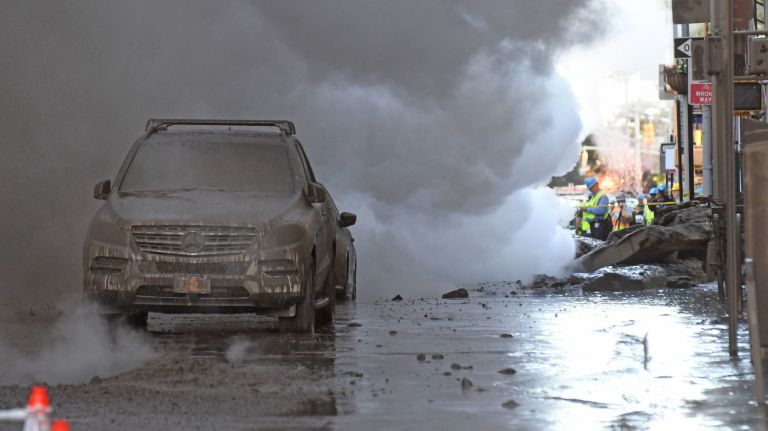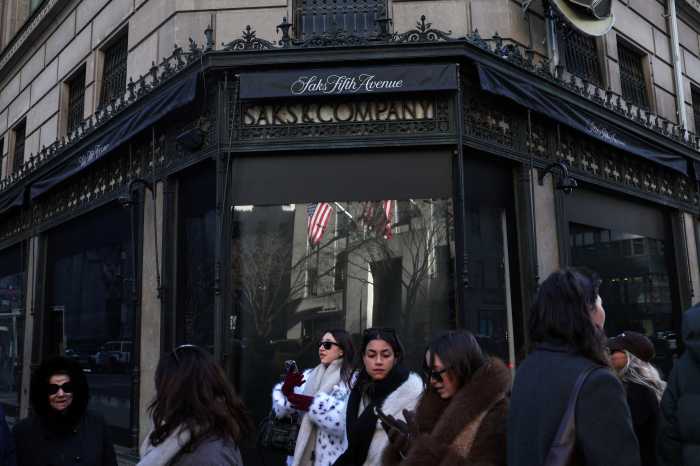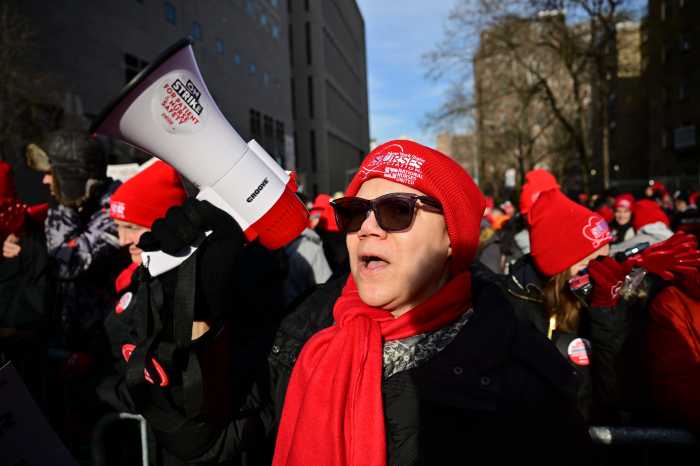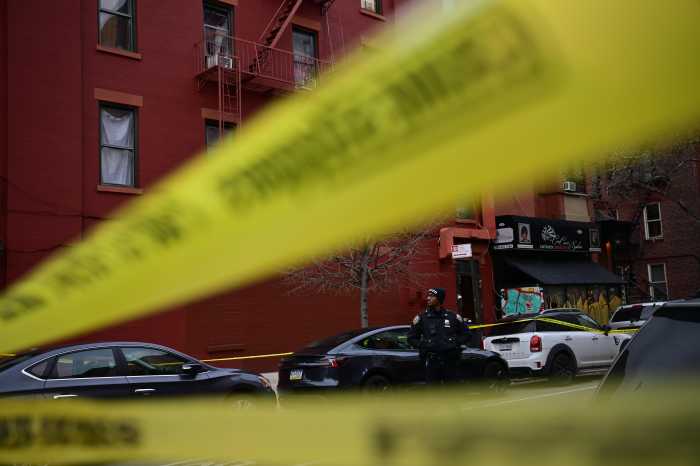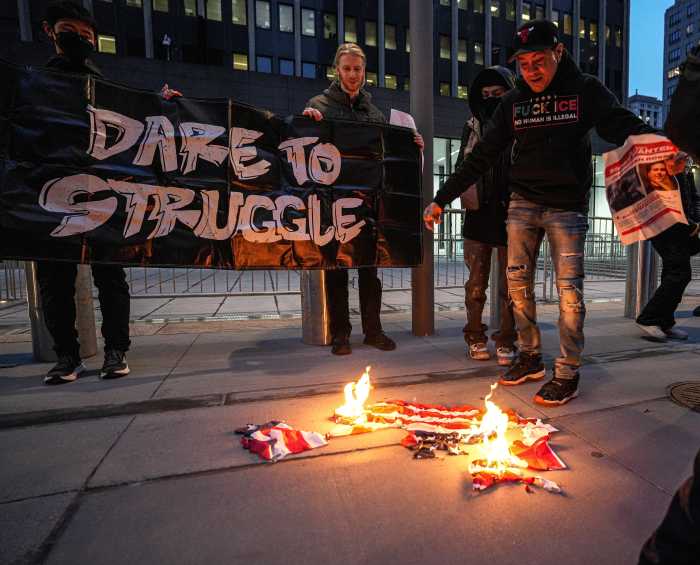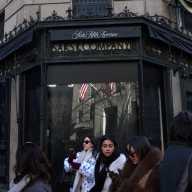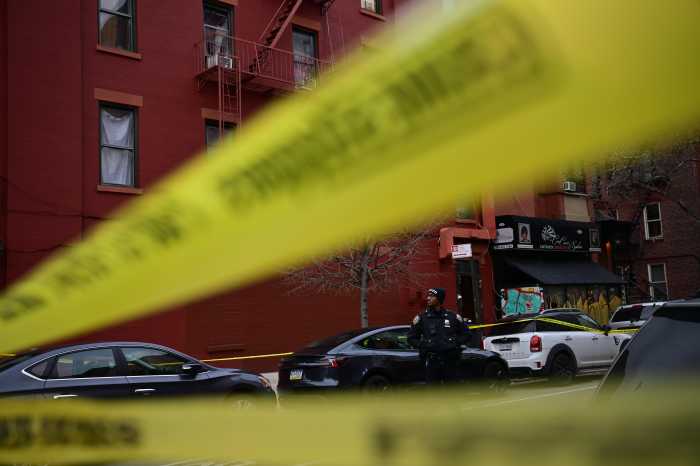
People who were near the steam pipe explosion in the Flatiron District Thursday morning are being urged to take precautions after debris from the blast tested positive for asbestos.
Tests conducted by Con Edison and the city Department of Environmental Protection confirmed there was asbestos in the steam line casing, according to Mayor Bill de Blasio.
“That’s obviously a real concern to us,” de Blasio added.
Con Edison said anyone who was covered in material or debris from the explosion should bag their clothing and shower. Decontamination tents were set up at 22nd Street and Broadway as well as 19th Street and Broadway for anyone who was exposed to the steam to be evaluated and drop off their clothing.
Those who were in the immediate area of this morning’s steam pipe rupture should take a shower, bag their clothing and bring it to Con Edison personnel. The immediate area is 500 feet east or west of 5th Avenue on 20th and 21st streets and 100 feet north and south on 5th Ave. pic.twitter.com/WqQPDbwyY7
— Con Edison (@ConEdison) July 19, 2018
Hours after the explosion, air quality tests showed no “meaningful presence” of asbestos, de Blasio said. The concern, according to the mayor, is with the debris that the blast created, some of which could still be seen on nearby building facades and on the street Thursday afternoon.
“There’s real concern about whether any debris entered into buildings or into air conditioning systems,” de Blasio said. “So there’s going to be a thorough assessment to make sure that all the buildings are clean and safe.”
The pipe exploded on Fifth Avenue between 20th and 21st streets around 6:40 a.m., sending a plume of steam and asbestos-contaminated debris into the air. Eight people suffered minor injuries, according to FDNY Commissioner Daniel Nigro.
The mayor defined the main area affected by the explosion as between 19th and 22nd streets and between Sixth Avenue and Broadway. Sixteen asbestos inspectors with the city Department of Environmental Protection will conduct physical assessments of 44 nearby buildings for contamination before residents and workers are allowed to return — a process that could take days.
Anyone who encounters debris from the steam pipe explosion — even outside the affected area outlined by officials — should notify their landlord, building owner or building manager. Officials are warning residents not to touch debris.
Scroll down to learn more about asbestos and its health risks.
What is asbestos?
Asbestos is a mineral fiber that occurs naturally in rock and soil. It was commonly used in building construction insulation and as a fire retardant because of its fiber strength and heat-resistance qualities. It can also be found in various manufactured goods, including old hot water and steam pipes, ceiling and floor tiles, roof shingles, gaskets, coatings, heat-resistant fabrics, and friction products such as brakes and transmission parts, according to the U.S. Environmental Protection Agency.
Are there short-term health risks?
Brief exposure to contaminated material in the air poses a small risk, de Blasio said. City officials are more concerned about long-term exposure that might occur if asbestos is left undetected on clothing or inside nearby buildings.
“We do not want anything that might cause repeated exposure,” de Blasio said.
What are the long-term health effects of asbestos?
Exposure to asbestos can increase your risk of lung-related illnesses, but symptoms may only emerge years later.
The longer a person is exposed to asbestos, the greater the risk of developing an illness, per the EPA.
There are three common health issues connected to asbestos:
- Lung cancer
- Mesothelioma
- Asbestosis
Mesothelioma is a form of cancer that appears in the lining of the lung and chest as well as the heart and abdomen. Asbestosis is a long-term, noncancerous lung disease.
What to do if you may have been exposed to asbestos in the Flatiron District
City officials are urging anyone who may have come into contact with debris from the explosion to remove their clothing, place it in a sealed bag and take a shower. Then bring the bag of clothing to the Con Edison sites set up at 22nd Street and Broadway and 19th Street and Broadway.
“If there’s evidence of material on the clothing, we want that clothing turned in,” de Blasio said.
Anyone who was on 20th and 21st streets within 500 feet east or west of Fifth Avenue, or within 100 feet north and south of the explosion on Fifth Avenue should turn their clothing over to Con Edison, the utility said.
Con Edison will compensate people “in an appropriate fashion” for their lost clothing, the mayor added.
The company was accepting bagged clothing and helping people submit compensation claim forms at both decontamination sites from 8 a.m. to 8 p.m. Friday.
What to do if you live in the affected area and cannot return home
The mayor said it could take several days before residents and business owners are allowed to return to the area near the blast site. In the meantime, a reception center has been set up for affected individuals at The Clinton School at 10 E. 15th St., according to the city Office of Emergency Management. The center will remain open until at least Sunday, officials said.
The NYPD and FDNY will send trained and properly equipped officers into homes to retrieve urgently needed personal items, such as medicine, as well as to recover pets who were left behind.
“People will not be let into their apartments until we have cleared their buildings,” he added. “We are going to do all we can to help people have a place to stay if they cannot go back to their building.”
Anyone who lives in the affected buildings should call 311 for information about accessing their home, the mayor’s office said.
What happens after a positive asbestos test in buildings?
If tests in the buildings come back positive for asbestos, building owners would have to have an abatement done. There is first a 10-day notification period, where a contractor would have to file paperwork with the Department of Environmental Protection, said John-Patrick Curran, a Manhattan environmental lawyer with the firm, Sive, Paget & Riesel P.C.
“After the 10 days, they would set up their containment, which would include essentially a sealed area in which they would work,” he said.
The abatement involves cleaning any surface in the impacted area, but some things may not be able to be adequately cleaned, Curran said.
“There’s always a concern with porous materials — upholstery, carpeting, clothing, things like that — where asbestos fibers can become embedded,” he said. “Most consultants and abatement contractors will not want to give an opinion as to whether those items have been adequately cleaned, so often you end up throwing them out.”
During the process, an air monitoring firm would also be present to ensure the air is safe. Once the abatement is over, they would perform a clearance air sampling to confirm it was safe for people to enter.
The abatement and waiting for the clearance sample could take several days, depending on how large the impacted area is, Curran said.
With Nicole Brown



